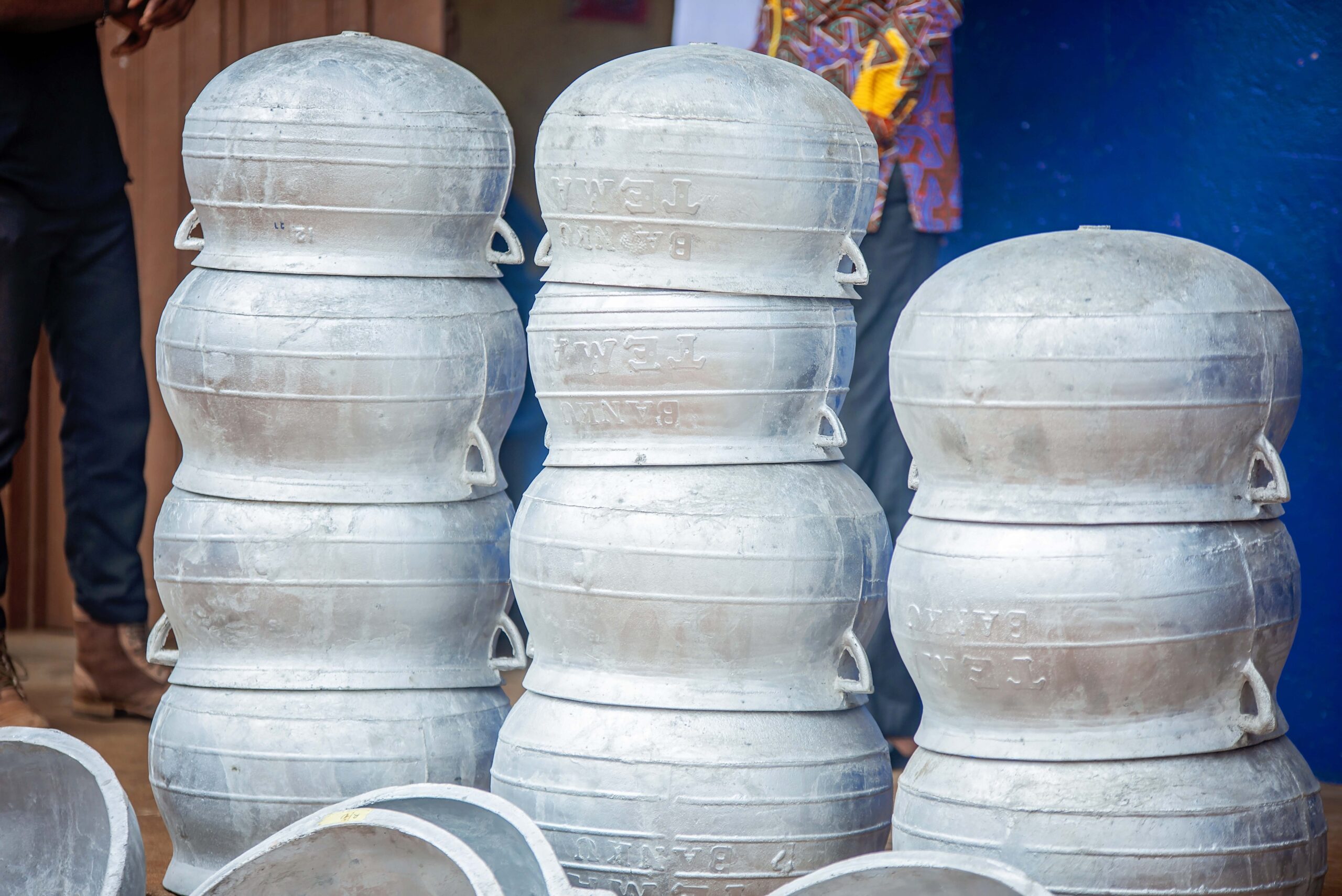Ghana: Study of Lead in Metallic Cookware in Schools

Pure Earth completed several extensive studies both at market and household levels targeting specific items showing lead concentration above safe thresholds and potentially contributing to lead poisoning in children and adults. The world’s largest global analysis of lead contamination in consumer goods – an international Rapid Market Screening program where Pure Earth collected and tested the lead concentration in more than 5,000 product samples from markets across 25 low- and middle-income countries – found that metal cookware had the highest prevalence of lead concentration above threshold. In total, out of over 500 samples, 52% of sampled metallic cookware products contained threshold-exceeding levels of lead, with particularly high percentages in countries like Nepal, Pakistan, Uganda, and Tamil Nadu in India, all of them with +70% of items exceeding threshold.
Pure Earth’s initiative to address the risks of lead contamination in aluminum cookware used in school feeding programs across low- and middle-income countries (LMICs). Recent studies show that over 52% of sampled aluminum cookware exceed safe lead thresholds, posing significant health risks to children who consume food prepared in these utensils. The project focuses on identifying and replacing contaminated cookware in schools, testing food prepared with aluminum cookware for lead levels, and piloting low-cost interventions to mitigate exposure.
Key Details:
- Project Focus: Testing and replacing lead-contaminated aluminum cookware in school feeding programs.
- Geographical Scope: Initially targets three LMICs with high lead prevalence in cookware.
- Intervention: Identify schools with contaminated cookware, test cooking utensils and food, provide lead-free alternatives, and disseminate findings to stakeholders.
- Funding and Support: Supported by various international organizations and governmental partners.
Project Summary
Projected Started: January 2024
Projected Ended: November 2024
The project addresses lead contamination in aluminum cookware, which has been identified as a major source of lead exposure in LMICs. It focuses on basic schools with school feeding programs where leaded contaminated cookware could significantly impact children’s health. The initiative involves testing cookware will significantly impact children’s health, evaluating the impact on food, and piloting interventions to replace hazardous cookware with lead-free alternatives. The findings aim to inform global policies and interventions for safer consumer goods.
Key Activities:
- Conduct XRF analysis to identify cookware with elevated lead concentrations.
- Test food prepared in contaminated cookware for lead content.
- Replace hazardous cookware with lead-free alternatives.
- Disseminate findings to schools, local governments, and international stakeholders.
Project Goals
- Identify Sources of Lead Exposure: Evaluate the prevalence of lead-contaminated cookware in schools and its impact on food safety.
- Reduce Lead Exposure in Children: Replace lead-contaminated cookware in school feeding programs with lead-free alternatives.
- Raise Awareness: Educate stakeholders, including school officials and government agencies, on the risks of lead contamination and the benefits of safer alternatives.
- Inform Policy and Practice: Provide evidence-based recommendations to guide national and international policies on lead-safe consumer goods.
